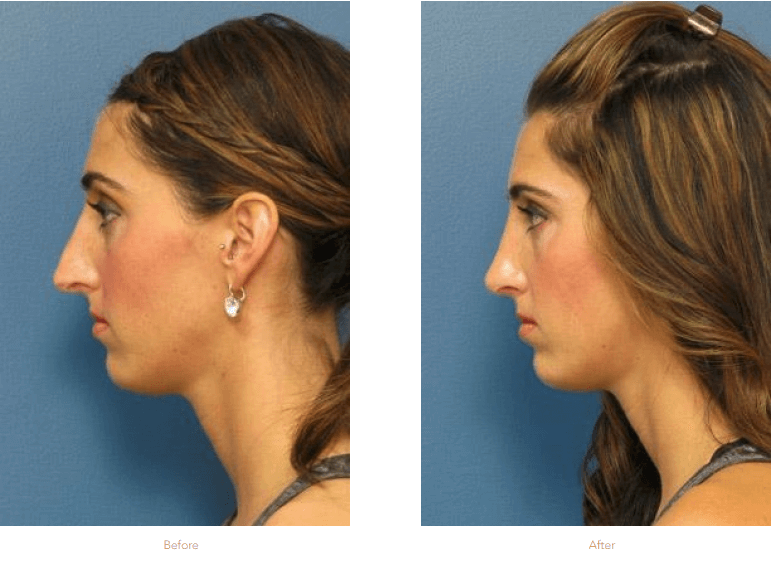Austin Rhinopasty Surgeon Can Be Fun For Everyone
Table of ContentsUnknown Facts About Rhinoplasty Austin TxRhinoplasty Austin Tx Can Be Fun For AnyoneNot known Details About Rhinoplasty Surgeon Austin
Based upon the offered area of nasal skin, the surgeon selects the location for the bilobed flap, and orients the pedicle. If the problem is in the lateral aspect of the nose, the pedicle is based medially. If the problem is at the nasal suggestion, or at the nasal dorsum, the pedicle is based laterally.

The external semi-circle specifies the necessary length of the 2 lobes of the skin flap. The inner semi-circle bisects the center of the initial wound, and continues throughout the donor skin, establishing limitation procedure of the pedicle common to the 2 lobes of the flap. The surgeon then draws 2 lines from the peak of the injury; the first line drawn is at an angle of 45 degrees from the long axis of the wound, and the second line drawn is at a 90-degree angle from the axis of the injury.
The delineation of each of the two lobes of the flap begins and ends at the inner semi-circle, and encompasses the outer semi-circle, to the point where it intersects its central axis. The width of the very first lobe is around 2 mm narrower than the width of the wound; the width of the 2nd lobe is roughly 2 mm narrower than the width of the very first lobe.
The wound is deepened, to the nasal skeleton, to accommodate the tissue density of the bilobed flap (rhinoplasty austin tx). Technically, cutting the injury, enlarging it, is more suitable, and much safer, than cutting (thinning) the flap to fit the injury. Undermining the donor site for the 2nd lobe allows closing it mainly; it also eliminates excess-skin "dog-ears" at the donor website.
II. Nasolabial flap In the 19th century, the surgical methods of J.F. Dieffenbach (17921847) popularized the nasolabial flap for nasal reconstruction, for which it stays a foundational nose surgical treatment treatment. The nasolabial flap can be either superiorly based or inferiorly based; of which the superiorly based flap is the more useful rhinoplastic application, since it has a more versatile arc of rotation, and the donor-site scar is unnoticeable.
Facts About Rhinoplasty Austin Tx Uncovered
The blood supply for the flap pedicle are the transverse branches of the contralateral angular artery (the facial artery terminus parallel to the nose), and by a confluence of blood vessels from the angular artery and from the supraorbital artery in the medial canthus, (the angles formed by the conference of the upper and lower eyelids) (rhinoplasty surgeon austin).
The nasolabial flap is a random flap that is emplaced with the proximal (near) portion resting upon the lateral wall of the nose, and the distal (far) part resting upon the cheek, which includes my blog the primary angular artery, therefore is perfused with retrograde arterial flow. Surgical method the nasolabial flap The pedicle of the nasolabial flap rests upon the lateral nasal wall, and is transposed a maximum of 60 degrees, in order to prevent the "bridge effect" of a flap emplaced throughout the nasofacial angle.
The shape of the skin flap is cut from the injury design template made by the cosmetic surgeon. An incision is austin rhinopasty surgeon made to the flap (without an anaesthetic injection of epinephrine), which then is raised and oriented, in an inferior-to-superior direction, between the subcutaneous fat and the muscle fascia. The cutting continues until the skin flap can be easily shifted upon the nasal problem.
The flap then is bent back (shown), and can be thinned (cut) under loupe zoom; however, a nasolabial flap can not be thinned as easily as an axial skin-flap. rhinoplasty surgeon austin. After the nasolabial flap has been emplaced, the flap donor-site wound is sutured closed. For an injury of the lateral nasal wall that is less than 15 mm broad, the flap donor-site can be closed primarily, with stitches.

Such threats are prevented by advancing (moving) the skin of the cheek towards the nasofacial junction, where it is sutured to the deep tissues. Furthermore, a narrow wound, less than 1 mm large can be permitted to recover by secondary objective (autonomous re-epithelialisation). III. The paramedian forehead flap The paramedian forehead flap is the premier autologous skin graft for the restoration of a nose, by changing any of the aesthetic nasal subunits, especially concerning the problems of different tissue thickness and skin color.
Limited length is an useful application limitation of the paramedian forehead flap, especially when the client has a low frontal hairline. In such a patient, a little part of scalp skin can be consisted of to the flap, but it does have a various skin texture and does continue growing hair; such mismatching is avoided with the transverse emplacement of the flap along the hairline; yet that portion of the skin flap is random, and so risks a higher occurrence of necrosis.
The smart Trick of Austin Rhinopasty Surgeon That Nobody is Discussing
Nonetheless, the second stage of the nasal reconstruction can be performed with the client under local anaesthesia. Aesthetically, although the flap donor-site scar heals well, it is obvious, and hence difficult to conceal, especially in males. Rhinoplasty: A paramedian forehead flap design. Surgical technique the paramedian forehead flap The cosmetic surgeon creates the paramedian forehead flap from a custom-fabricated three-dimensional metal foil template stemmed from the steps of the nasal flaw to be fixed.
Later on, the distal half of the flap is dissected and thinned to the subdermal plexus. The cosmetic surgeon produces a metal foil template originated from the dimensions of the nasal injury. Applying a Doppler a knockout post ultrasonic scanner, the cosmetic surgeon recognizes the axial pedicle of the tissue-flap (made up of the supraorbital artery and the supratrochlear artery), typically at the base, beside the medial eyebrow; the point typically is between the midline and the supraorbital notch.